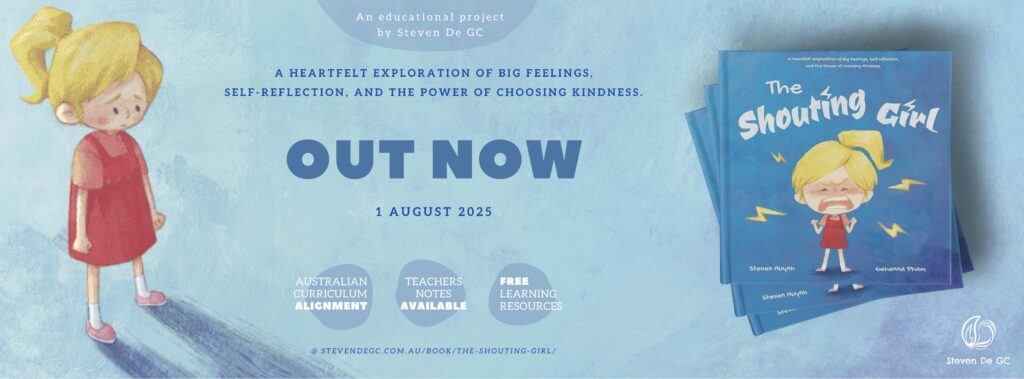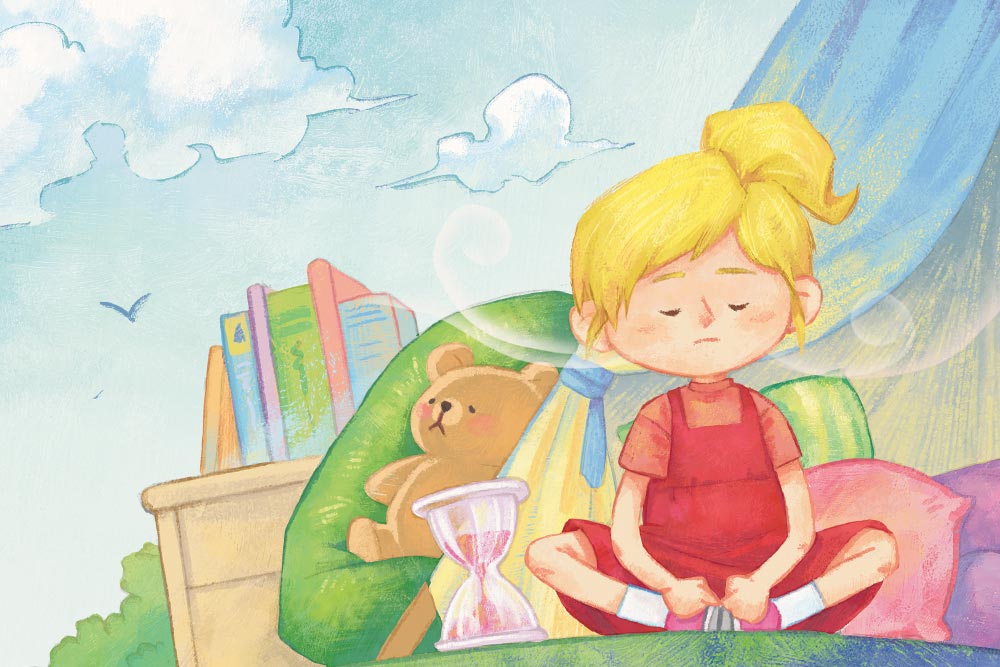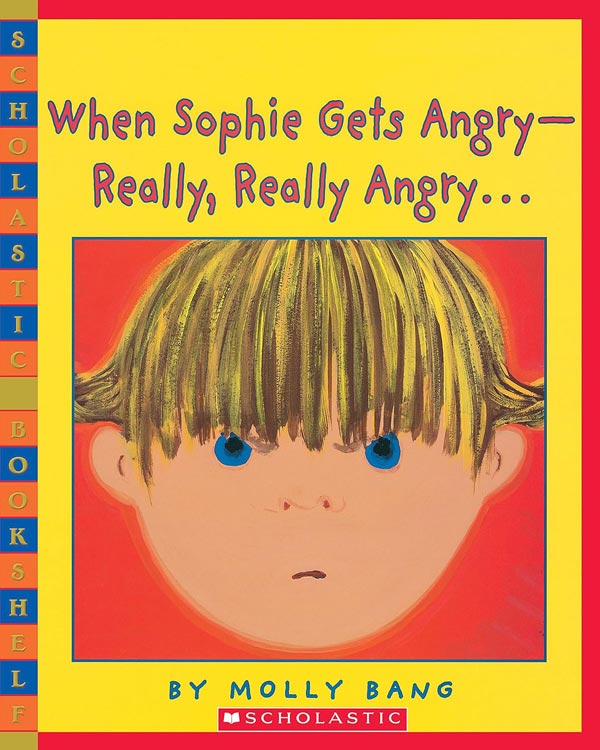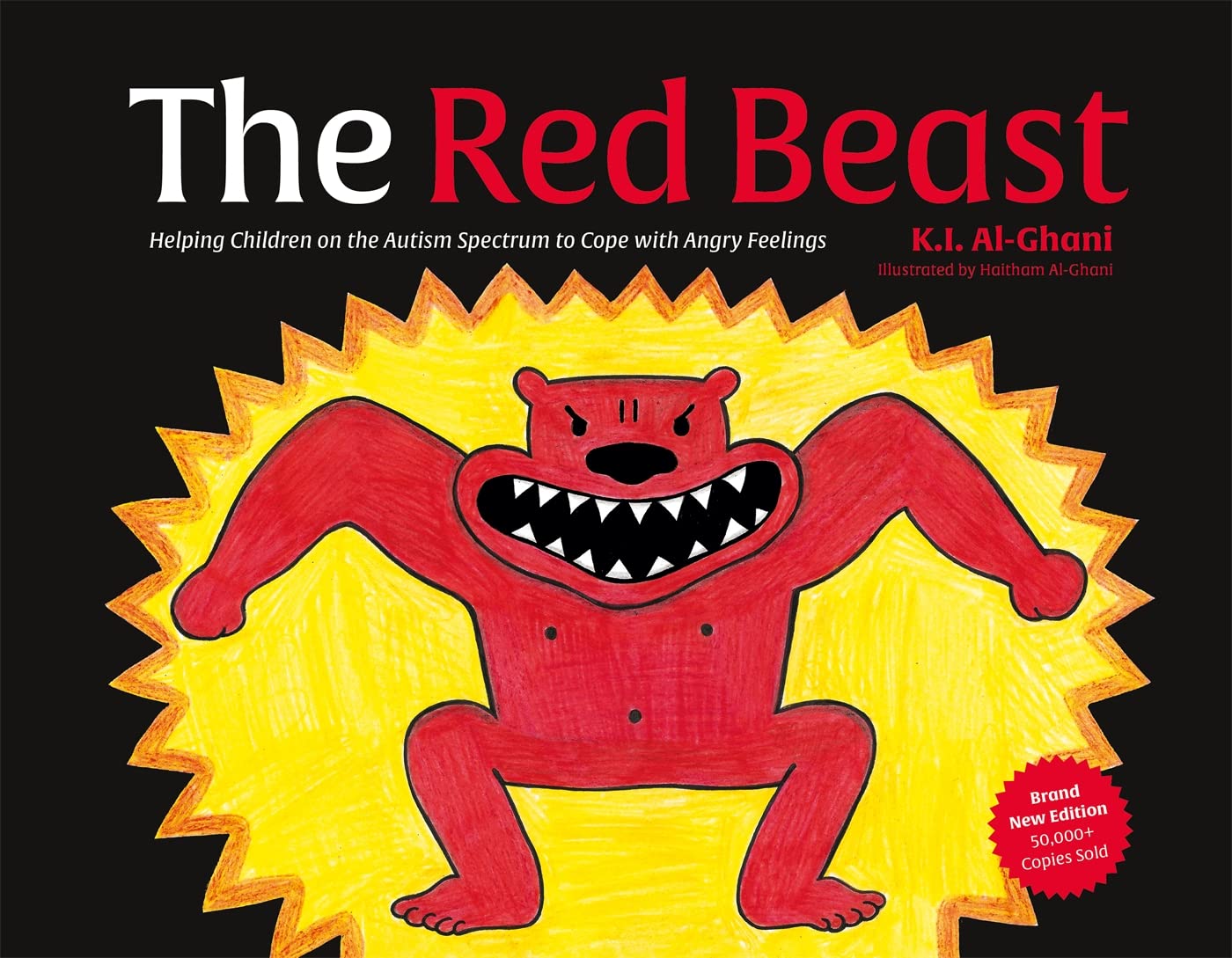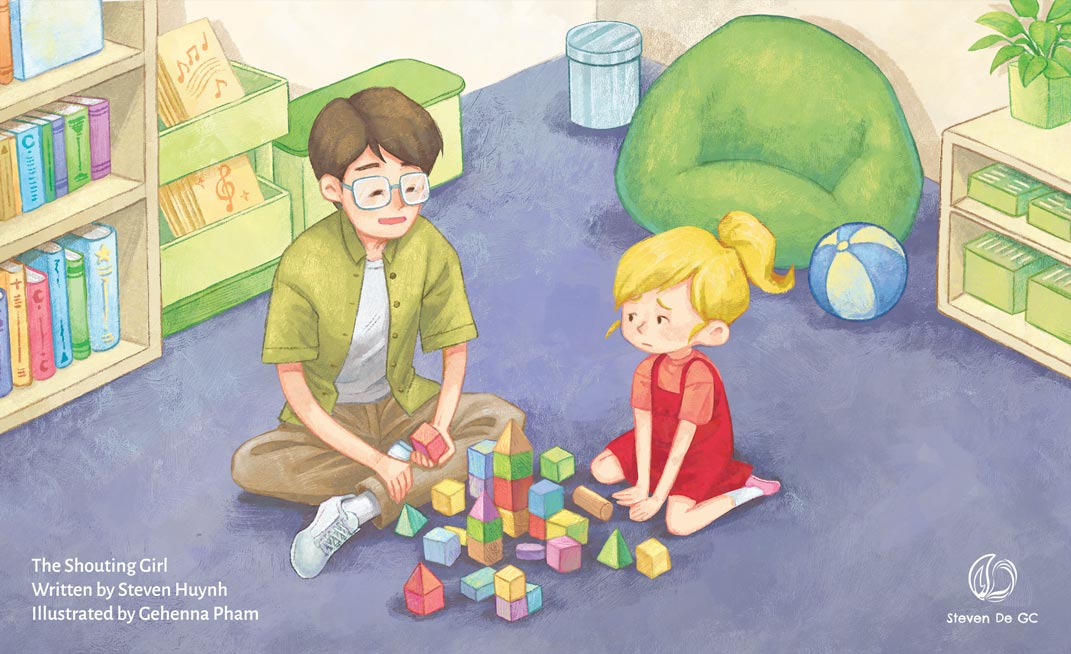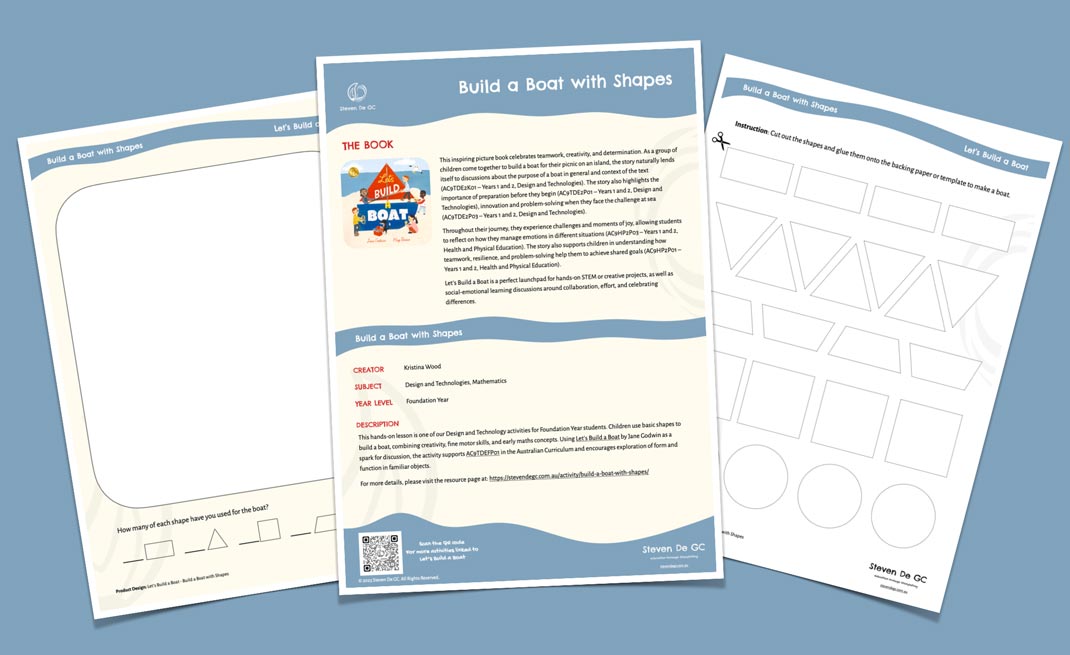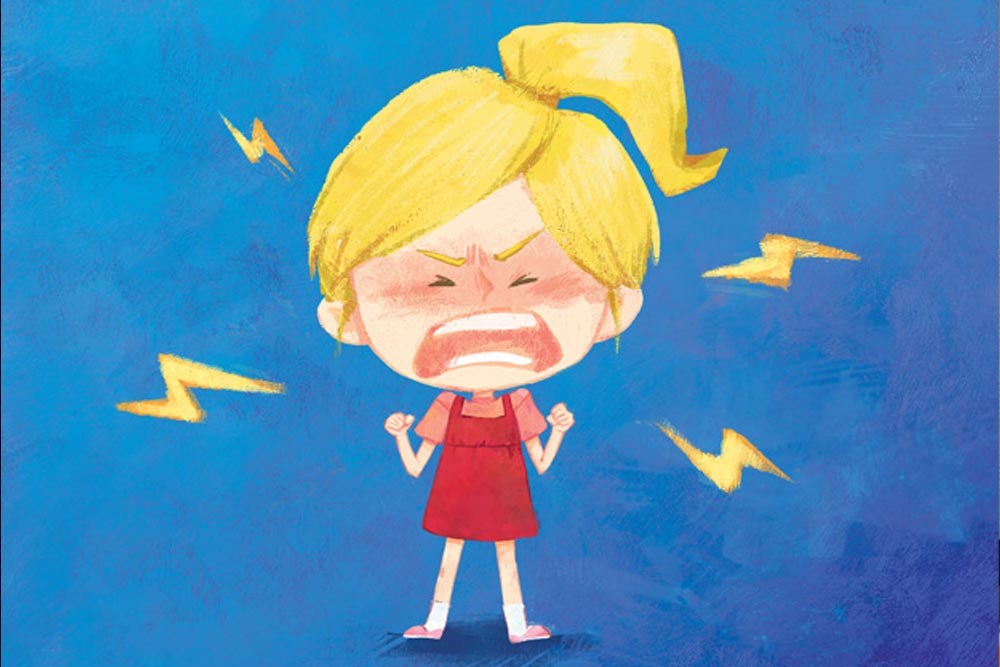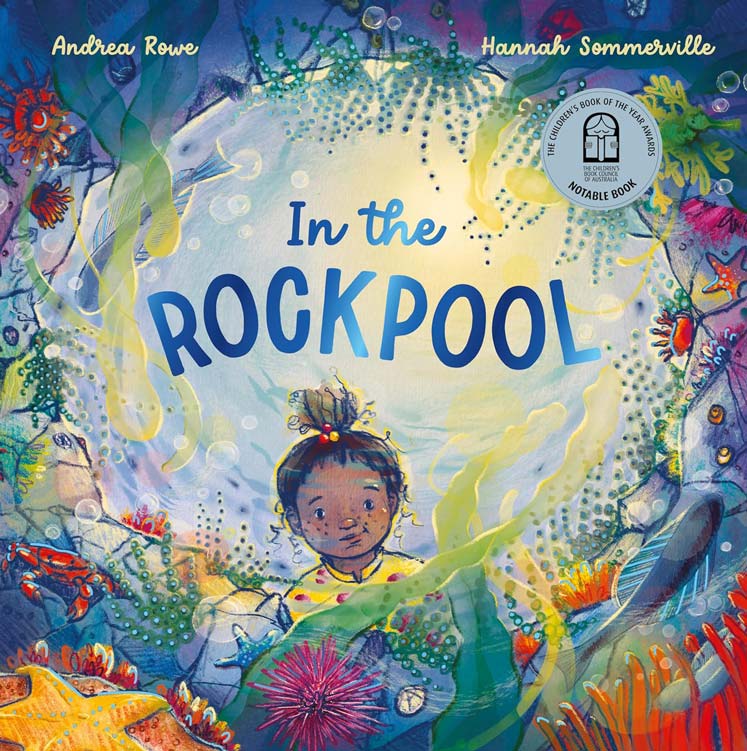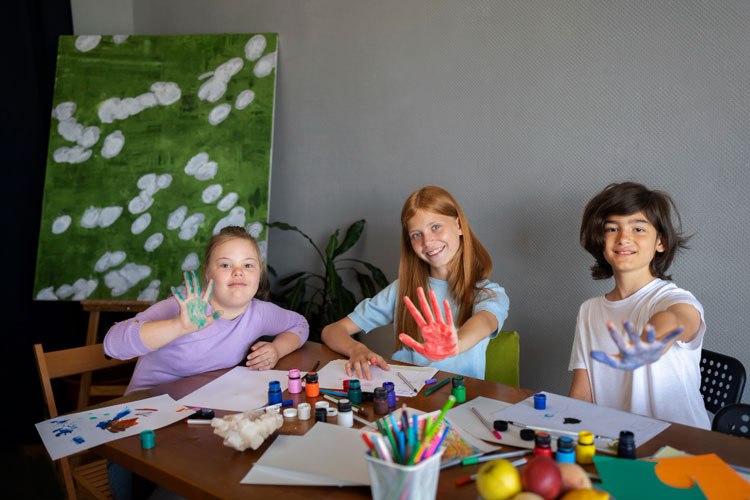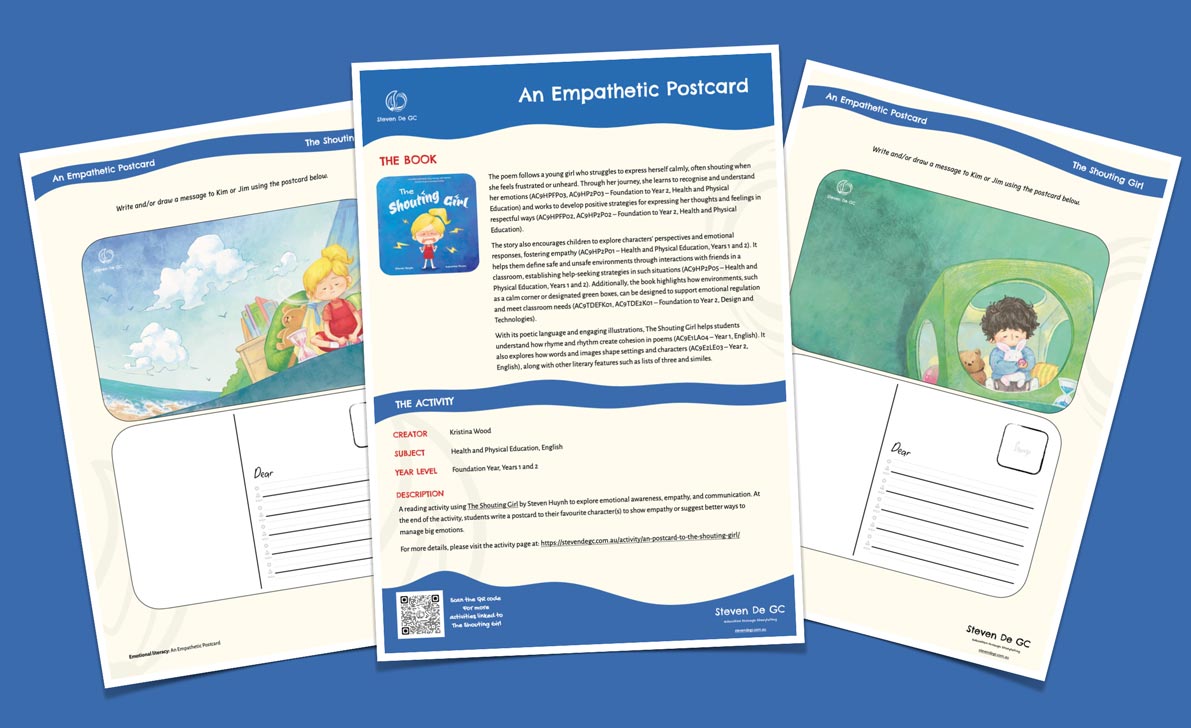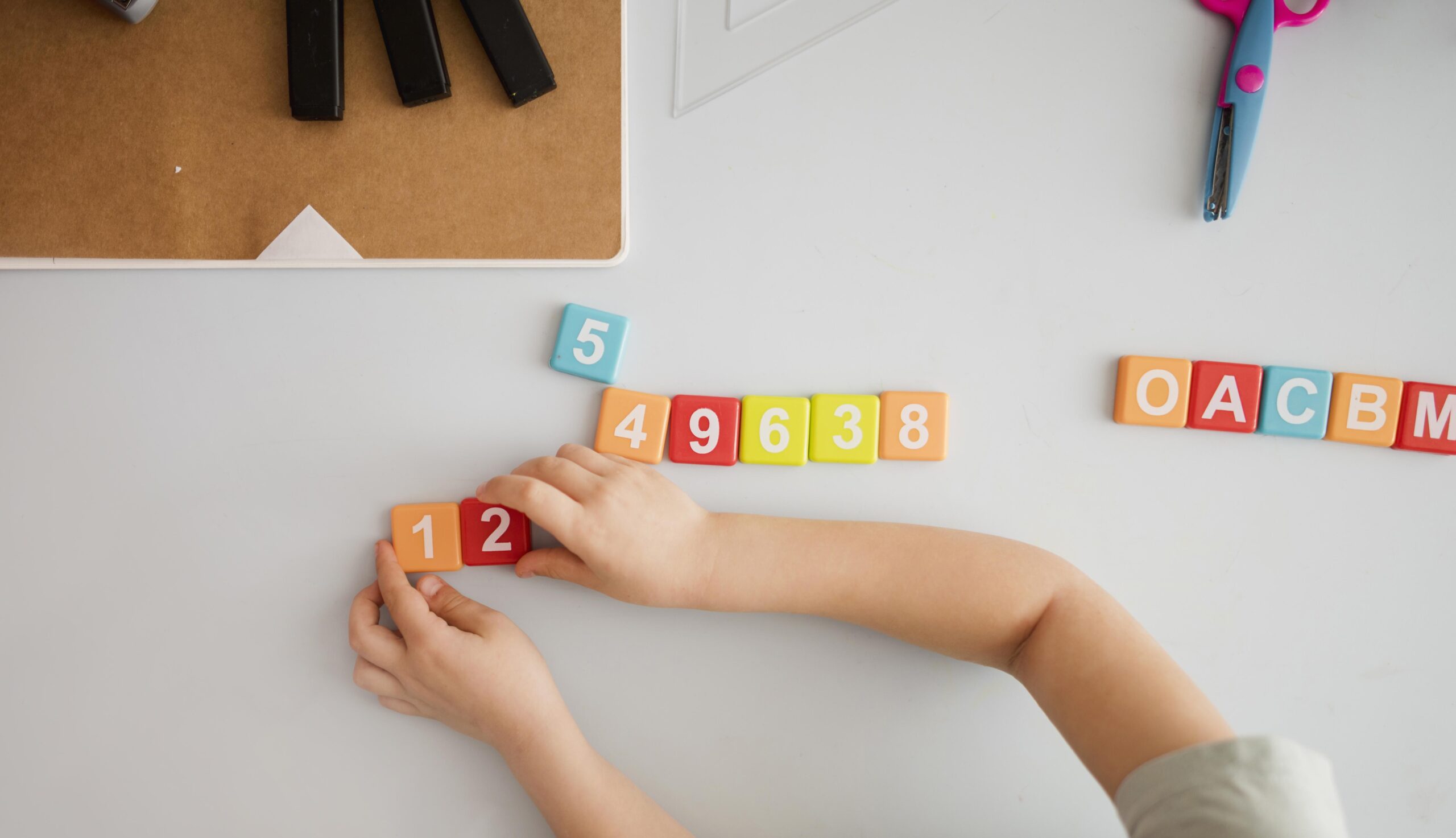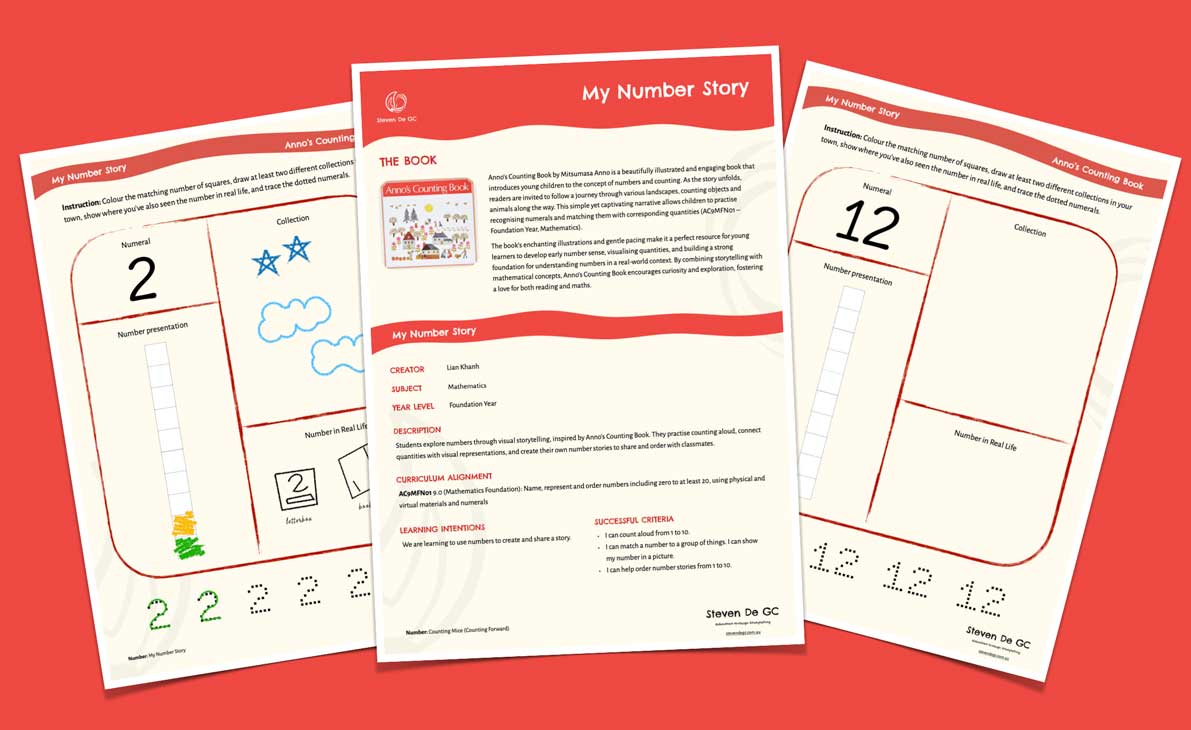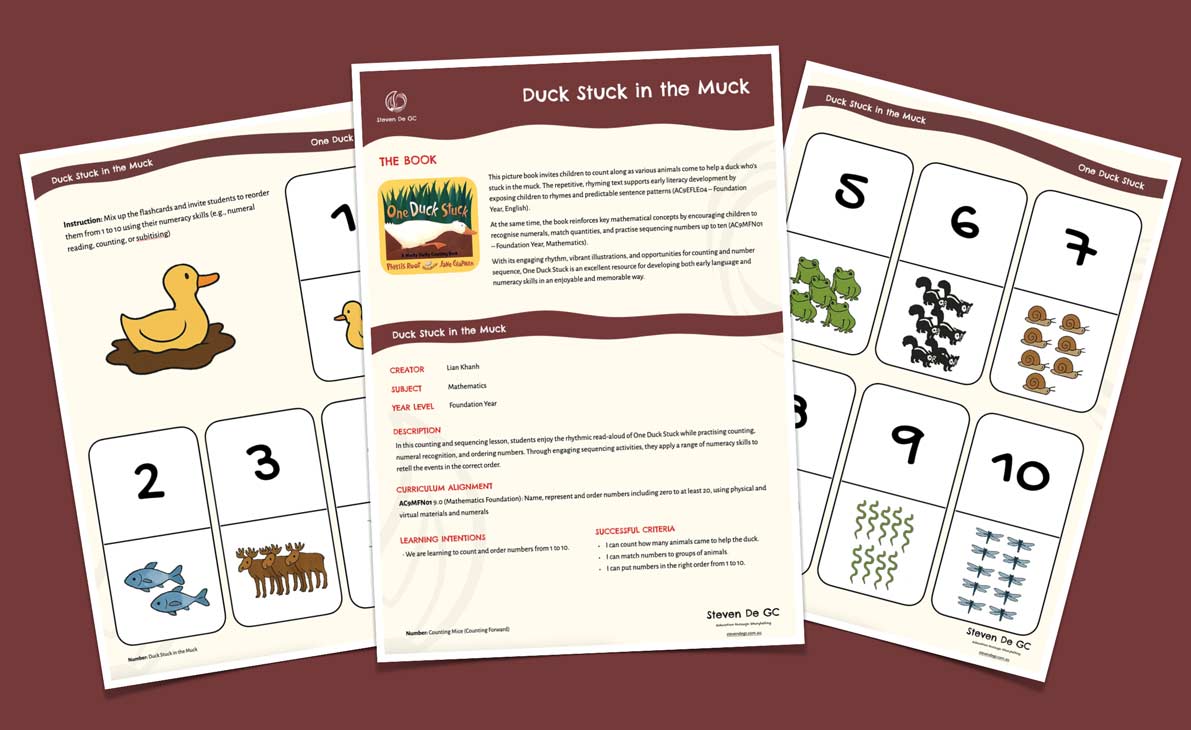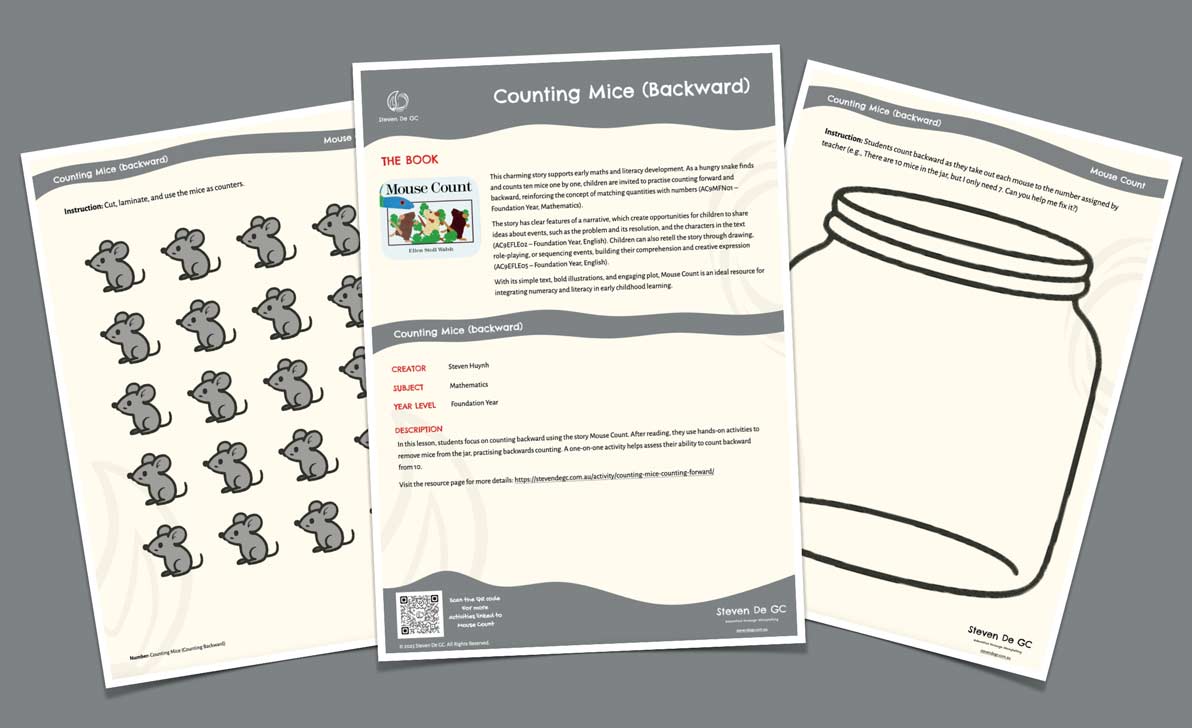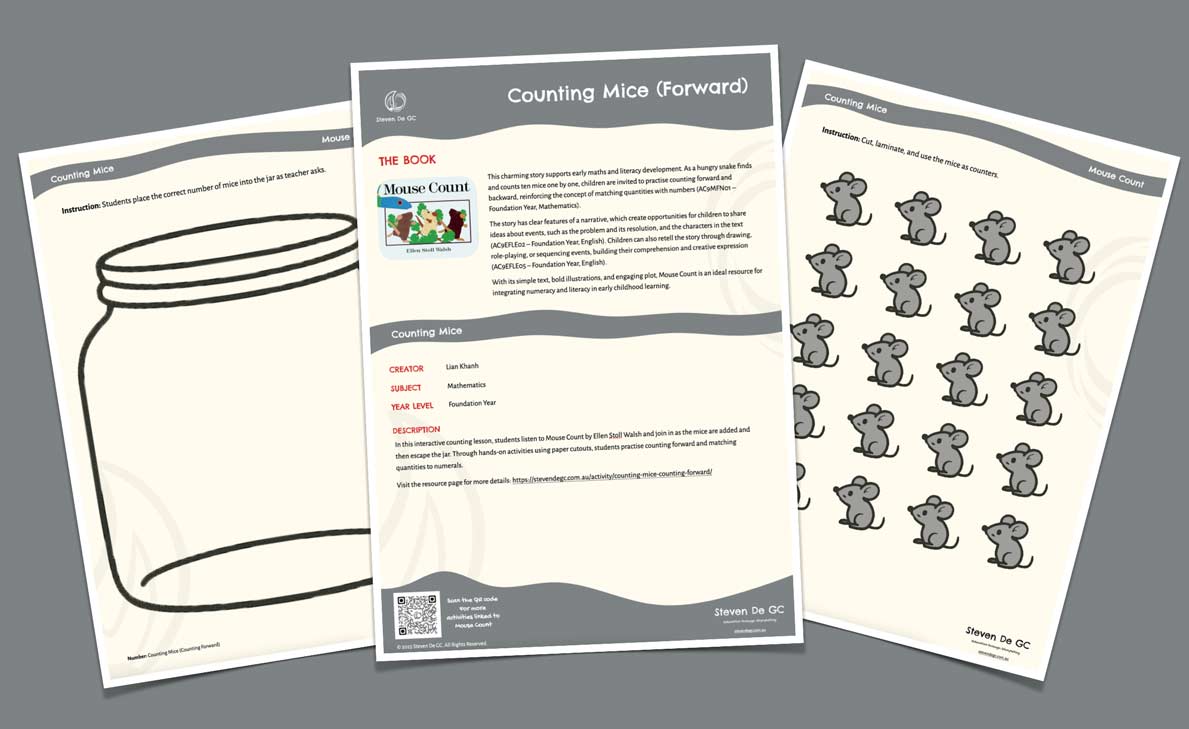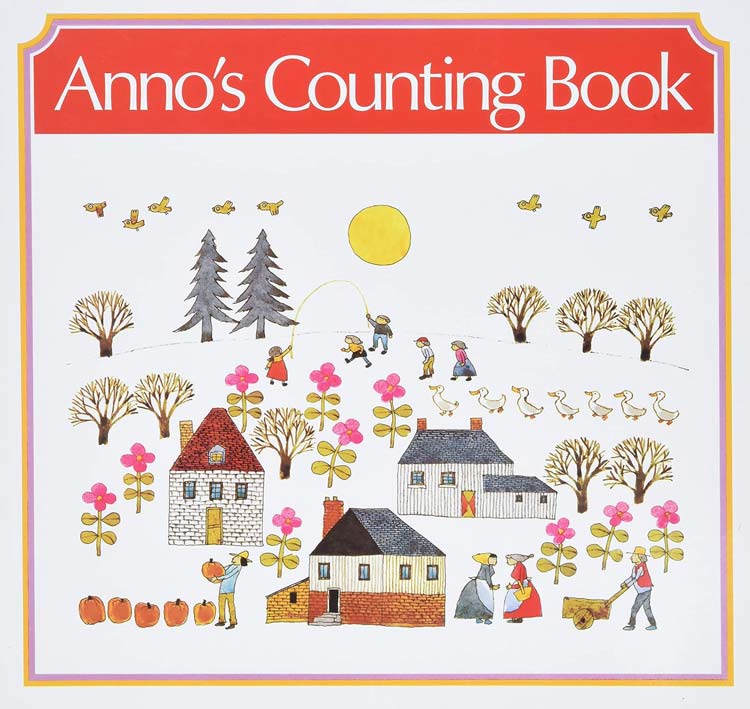Foundation
Children’s Picture Books and Activities Aligned with the Australian Curriculum for Foundation Year
This section brings together children’s books, learning activities, and lessons suitable for Foundation year students (age 5), aligned with the Australian Curriculum. Resources span key learning areas including English, Mathematics, Science, Design and Technologies, Humanities and Social Sciences (HaSS), and Health and Physical Education.
Whether you’re a teacher planning your week or a parent supporting learning at home, you’ll find age-appropriate content to engage early learners through stories, hands-on exploration, and creative play.
If you’re looking for specific themes or topics across multiple year levels (such as for a split class), we recommend browsing through our Subject section for more targeted results.
-
Children’s Calm Corner: A Practical Guide for Parents and Teachers
Discover how to create and use a calm corner for children. Includes free printables and suggestions for your home or classroom.
-
How to Discuss Family Tension or Conflicts with Kids
Practical advice for parents to discuss family tension with children and support healthy conflict resolution at home.
-
Recognising Anger With “When Sophie Gets Angry”
📔 When Sophie Gets Angry — Really, Really Angry by Molly Bang• We are learning to recognise emotions by showing how different feelings can look and feel in our bodies and on our faces.
-
When Sophie Gets Angry — Really, Really Angry
Written & illustrated by Molly Bang
Published by Scholastic Press
Theme/topic: Emotion recognition and Emotional regulation
The picture book explores the intense feelings that come with anger and how children can learn to manage them. When Sophie feels overwhelmed, her body reacts in strong and noticeable ways: her face gets hot, her fists clench, and she feels like exploding. This allows students to describe what anger looks and feels like physically (AC9HPFP03 – Foundation Year, Health and Physical Education), helping them recognise emotional cues in themselves and others.
As Sophie removes herself from the situation, takes time to cool down in nature, and eventually returns feeling calm, the story models simple and effective emotional regulation strategies (AC9HP2P03 – Years 1 and 2, Health and Physical Education). These moments provide powerful prompts for children to reflect on their own ways of calming down and regaining control during emotionally charged moments.
When Sophie Gets Angry — Really, Really Angry is a gentle yet impactful resource for developing emotional literacy, supporting children in identifying and managing their big emotions in healthy ways.
The Red Beast
Written by K.i. Al-Ghani
Illustrated by Haitham Al-Ghani
Published by Jessica Kingsley Publishers
Theme/topic: Emotion recognition and Emotional regulation
This powerful story helps children understand and manage anger through the metaphor of a ‘red beast’ that awakens when feelings become overwhelming. The book offers a safe and engaging way for students to explore what anger looks and feels like in the body (AC9HPFP03 – Foundation Year, Health and Physical Education), using clear language to describe both the emotional and physical signs of big feelings.
As the main character learns how to calm the red beast, readers are introduced to strategies for emotional regulation (AC9HP2P03 – Years 1 and 2, Health and Physical Education). The narrative also opens up conversations about how certain behaviours and language can cause hurt and harm to others (AC9HPFP02, AC9HP2P02 – Foundation to Year 2, Health and Physical Education). Through reflection and discussion, children are encouraged to build empathy and make respectful choices in how they express emotions.
The Red Beast is an essential resource for supporting social-emotional learning in early years classrooms, offering practical tools to help children recognise, name, and regulate big emotions in themselves and others.
Children’s Big Feelings: Empathetic Ways to Respond Beyond ‘Calm Down’
Discover respectful strategies and positive calming tips to manage children’s big feelings. Learn how to foster emotional regulation in kids both at school and home.
Build a Boat with Shapes
📔 Let’s Build A Boat by Jane Godwin• We are learning to apply knowledge of 2D shapes to design a boat.
Understanding Why and How to Calm a Child’s Meltdown
Understand your child’s meltdown. Learn what triggers meltdowns and how to support them through big feelings.
In The Rockpool
Written by Andrea Rowe
Illustrated by Hannah Sommerville
Published by Little Hare Books
Theme/topic: Counting, Habitats, and Ocean
The book invites young readers on a sensory exploration of the creatures and treasures found in coastal rockpools. The story encourages children to observe and describe the natural features of seaside habitats, including the plants and animals that live there, supporting understanding of animal needs and environments (AC9S1U01 – Year 1, Science).
As children engage with the rhythmic text and detailed illustrations, they also practise early number skills, such as counting shells, crabs, and other seaside items, reinforcing concepts of matching quantities with numerals and naming numbers in sequence (AC9MFN01 – Foundation Year, Mathematics).
This book is a rich cross-curricular resource, perfect for supporting science and maths learning through storytelling, observation, and wonder.
Storytelling through Fine Arts in Early Childhood Education
Discover how early childhood education benefits from visual literacy through storytelling and art. Explore creative ideas for your classroom today!
An Empathetic Postcard to The Shouting Girl
📔 The Shouting Girl by Steven Huynh• We are learning how we can respond with empathy and kindness.
Our Calm Corner
📔 The Shouting Girl by Steven Huynh• We are learning to identify tools and strategies that help us feel calm when we have big emotions.
Delightful Books and Activities for Children: Building Counting Skills Through Storytelling
Explore charming picture books and playful activities that teach early math concepts like counting and number sense. Perfect for engaging young learners through storytelling and hands-on exploration.
My Number Story
📔 Anno’s Counting Book by Mitsumasa Anno• We are learning to use numbers to create and share a story.
Duck Stuck in the Muck
📔 One Duck Stuck by Phyllis Root• We are learning to count and order numbers from 1 to 10.
Counting Mice (Counting backward)
📔 Mouse Count by Ellen Stoll Walsh• We are learning to count backward from 10.
Counting Mice (Counting forward)
📔 Mouse Count by Ellen Stoll Walsh• We are learning to count objects and match them to numbers.
Anno’s Counting Book
Written & illustrated by Mitsumasa Anno
Published by HarperCollins AU
Theme/topic: Counting
Anno’s Counting Book by Mitsumasa Anno is a beautifully illustrated and engaging book that introduces young children to the concept of numbers and counting. As the story unfolds, readers are invited to follow a journey through various landscapes, counting objects and animals along the way. This simple yet captivating narrative allows children to practise recognising numerals and matching them with corresponding quantities (AC9MFN01 – Foundation Year, Mathematics).
The book’s enchanting illustrations and gentle pacing make it a perfect resource for young learners to develop early number sense, visualising quantities, and building a strong foundation for understanding numbers in a real-world context. By combining storytelling with mathematical concepts, Anno’s Counting Book encourages curiosity and exploration, fostering a love for both reading and maths.
One Duck Stuck
Written by Phyllis Root
Illustrated by Jane Chapman
Published by CWP
Theme/topic: Counting, Repetition, and Rhyme
This picture book invites children to count along as various animals come to help a duck who’s stuck in the muck. The repetitive, rhyming text supports early literacy development by exposing children to rhymes and predictable sentence patterns (AC9EFLE04 – Foundation Year, English).
At the same time, the book reinforces key mathematical concepts by encouraging children to recognise numerals, match quantities, and practise sequencing numbers up to ten (AC9MFN01 – Foundation Year, Mathematics). With its engaging rhythm, vibrant illustrations, and opportunities for counting and number sequence, One Duck Stuck is an excellent resource for developing both early language and numeracy skills in an enjoyable and memorable way.
Mouse Count
Written & illustrated by Ellen Stoll Walsh
Published by HMH Books
Theme/topic: Counting and Narrative
This charming story supports early maths and literacy development. As a hungry snake finds and counts ten mice one by one, children are invited to practise counting forward and backward, reinforcing the concept of matching quantities with numbers (AC9MFN01 – Foundation Year, Mathematics).
The story has clear features of a narrative, which create opportunities for children to share ideas about events, such as the problem and its resolution, and the characters in the text (AC9EFLE02 – Foundation Year, English). Children can also retell the story through drawing, role-playing, or sequencing events, building their comprehension and creative expression (AC9EFLE05 – Foundation Year, English).
With its simple text, bold illustrations, and engaging plot, Mouse Count is an ideal resource for integrating numeracy and literacy in early childhood learning.


